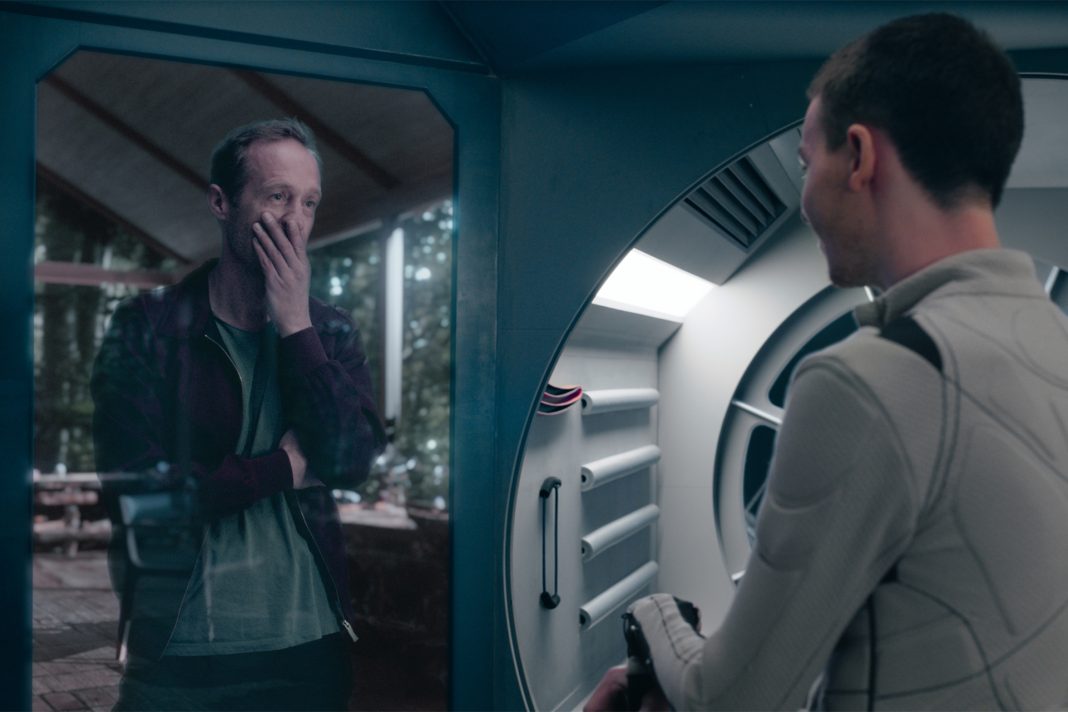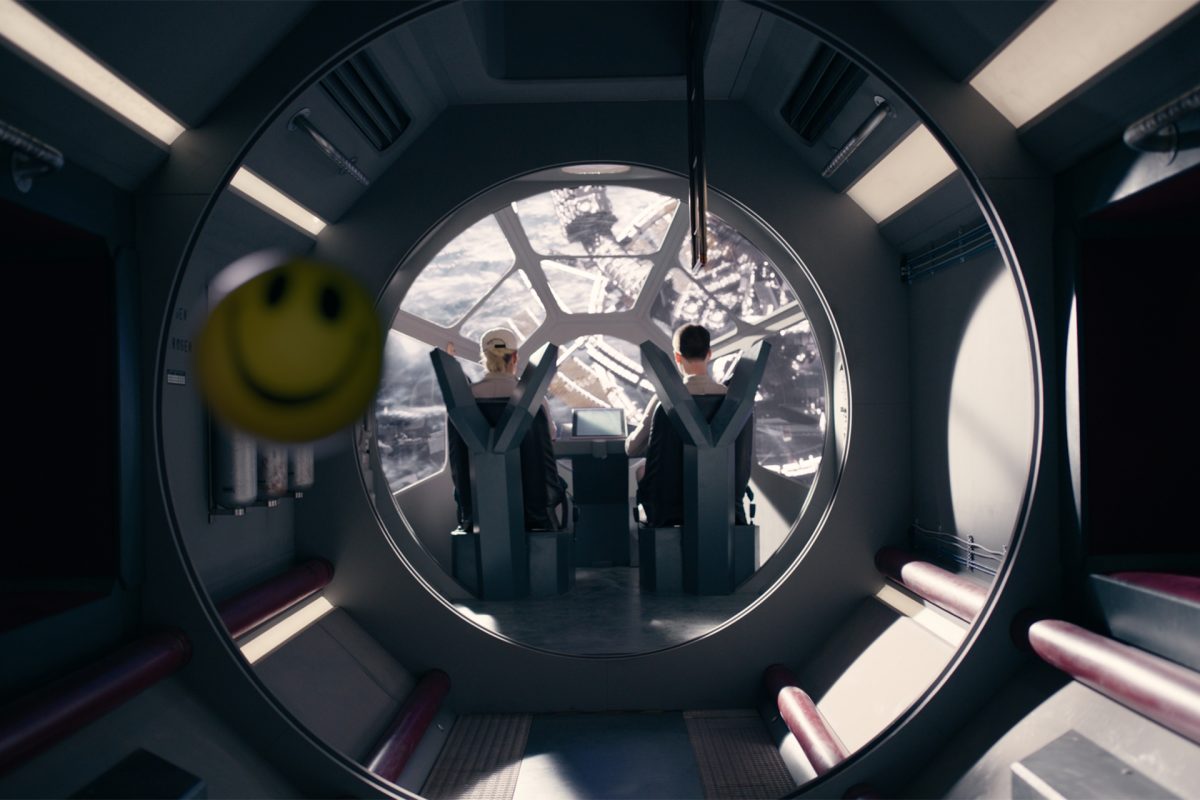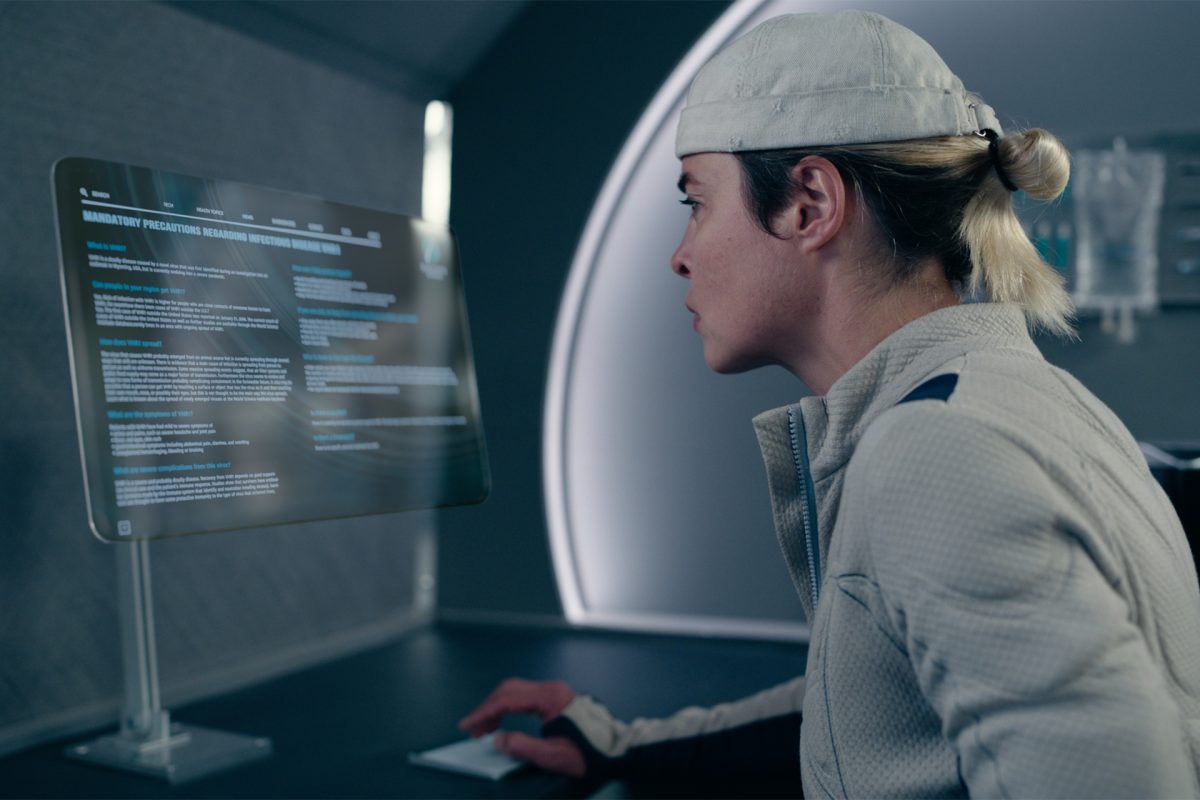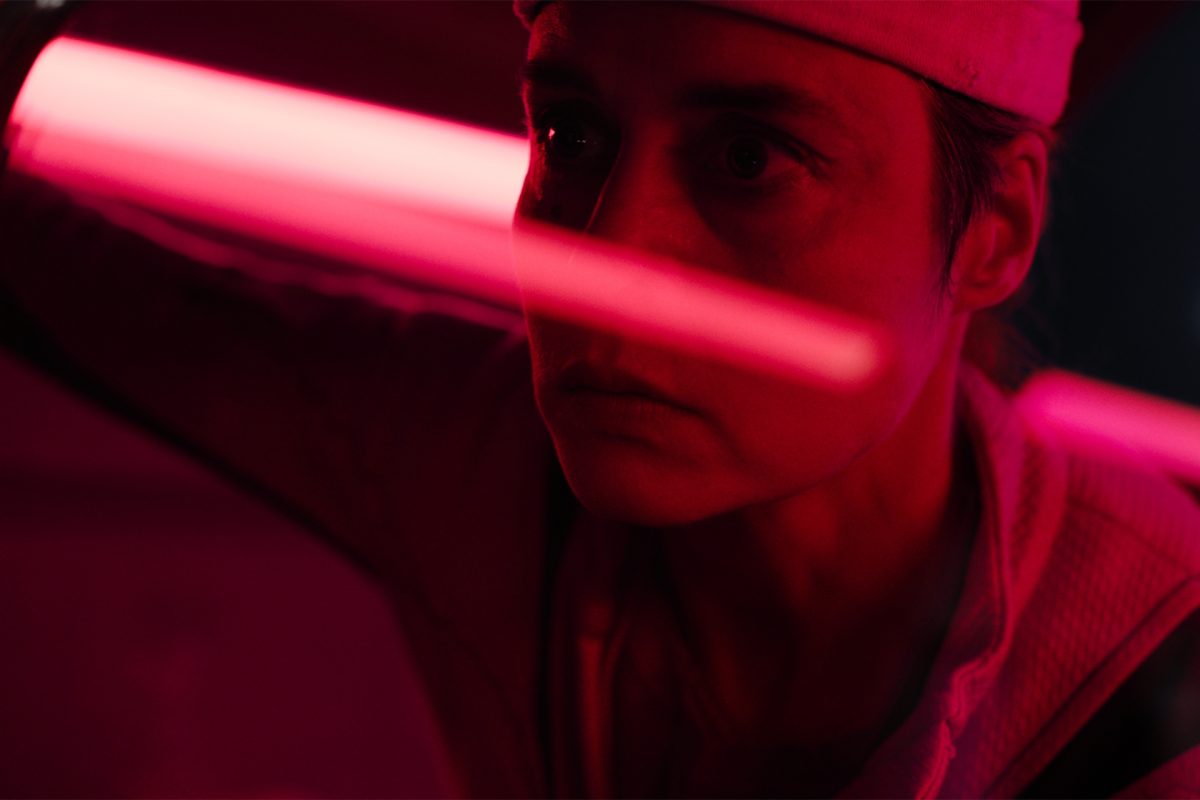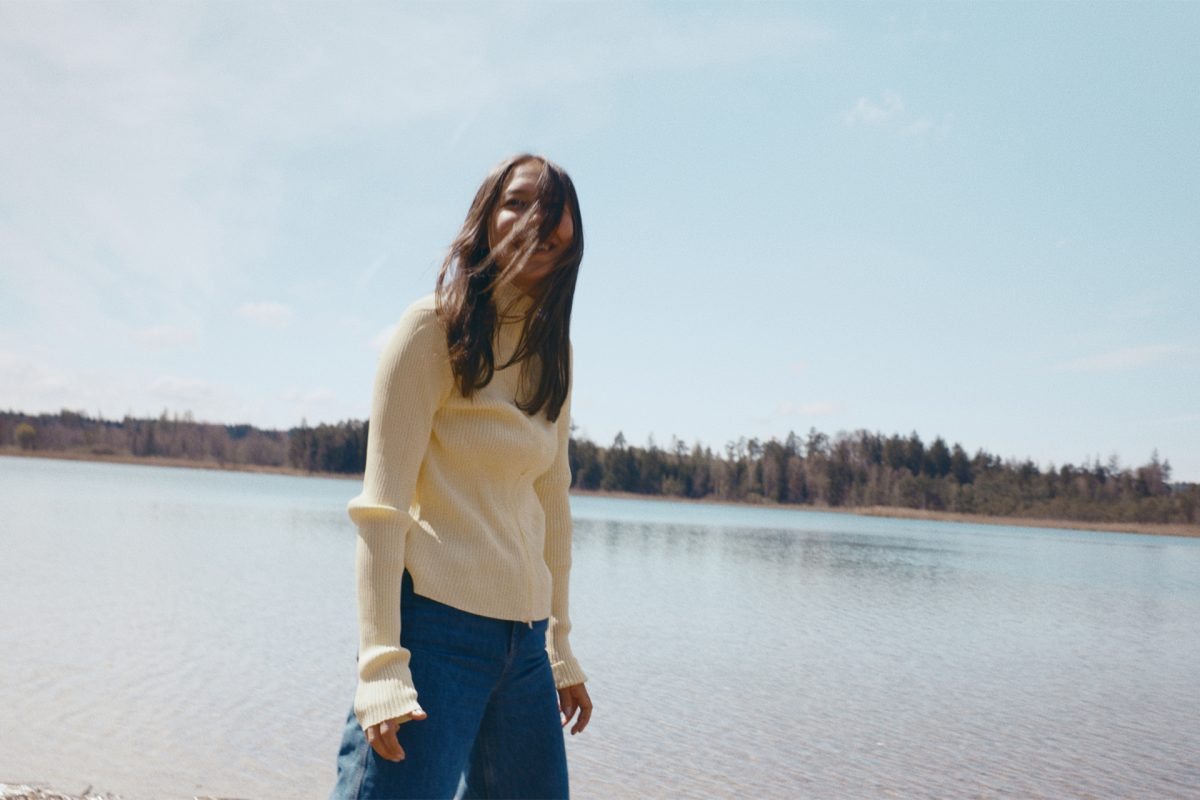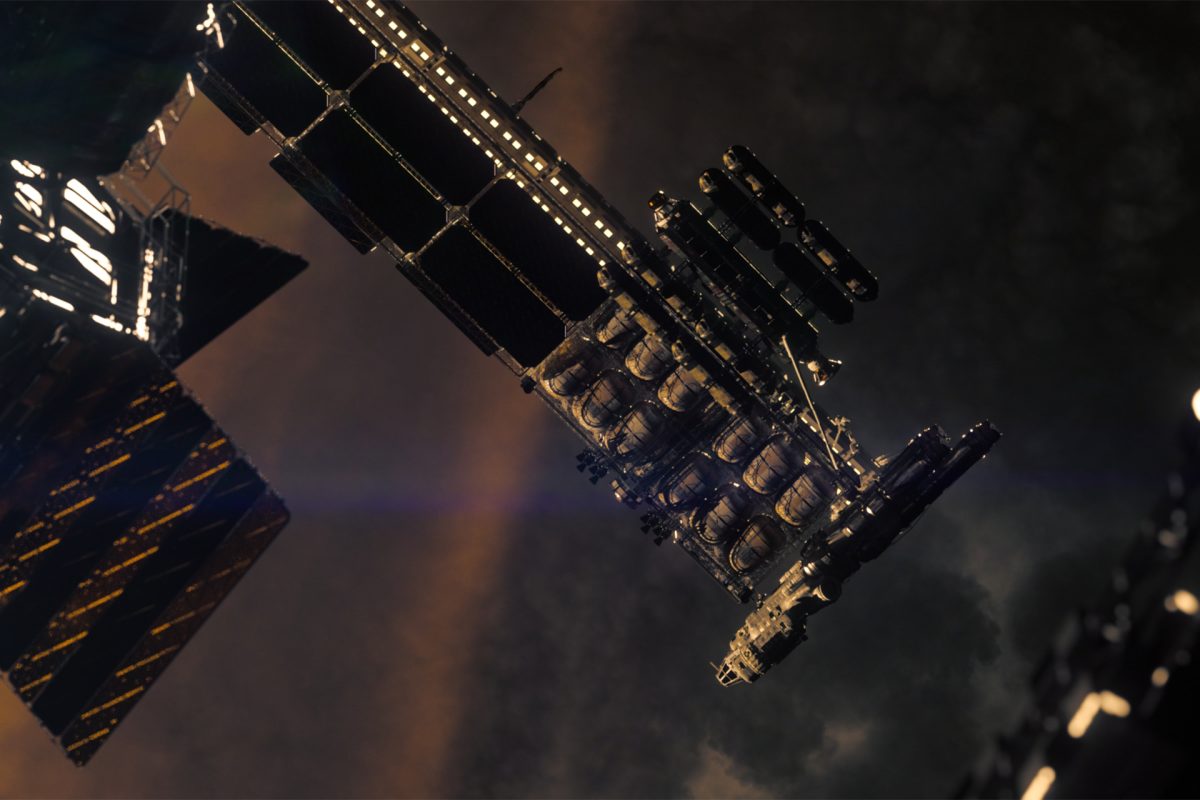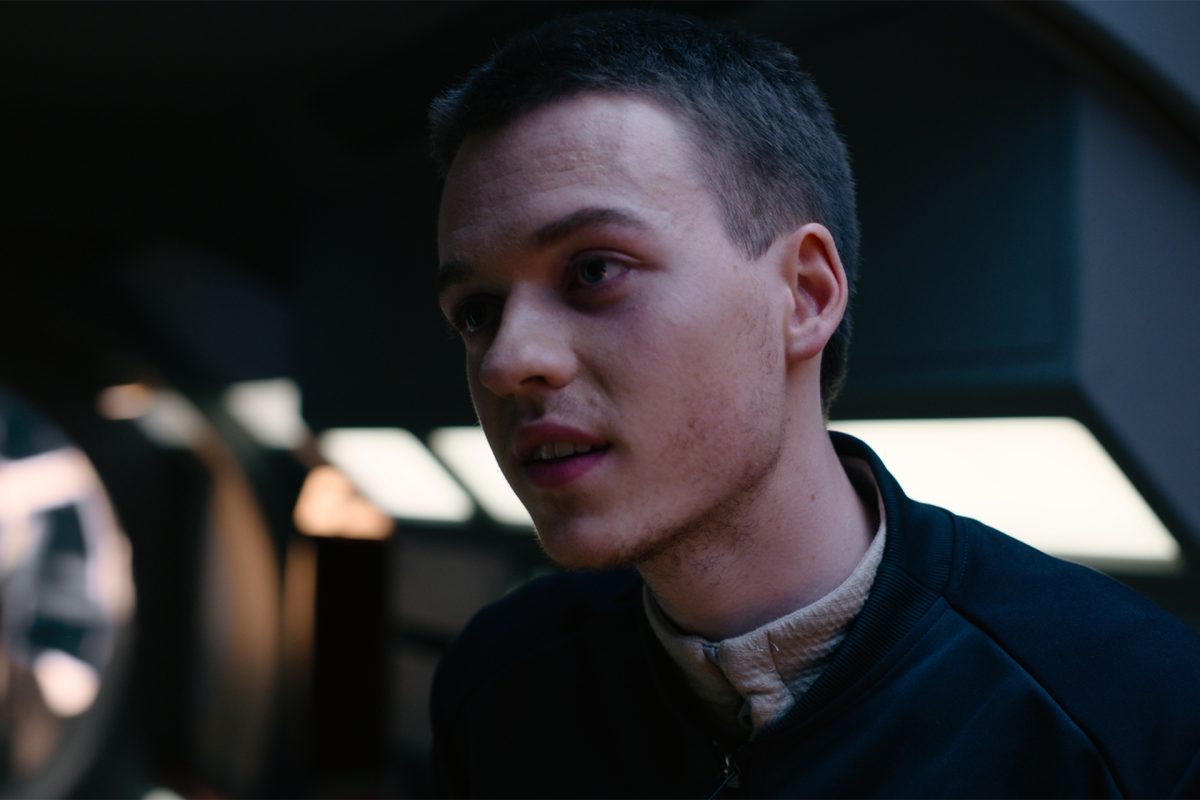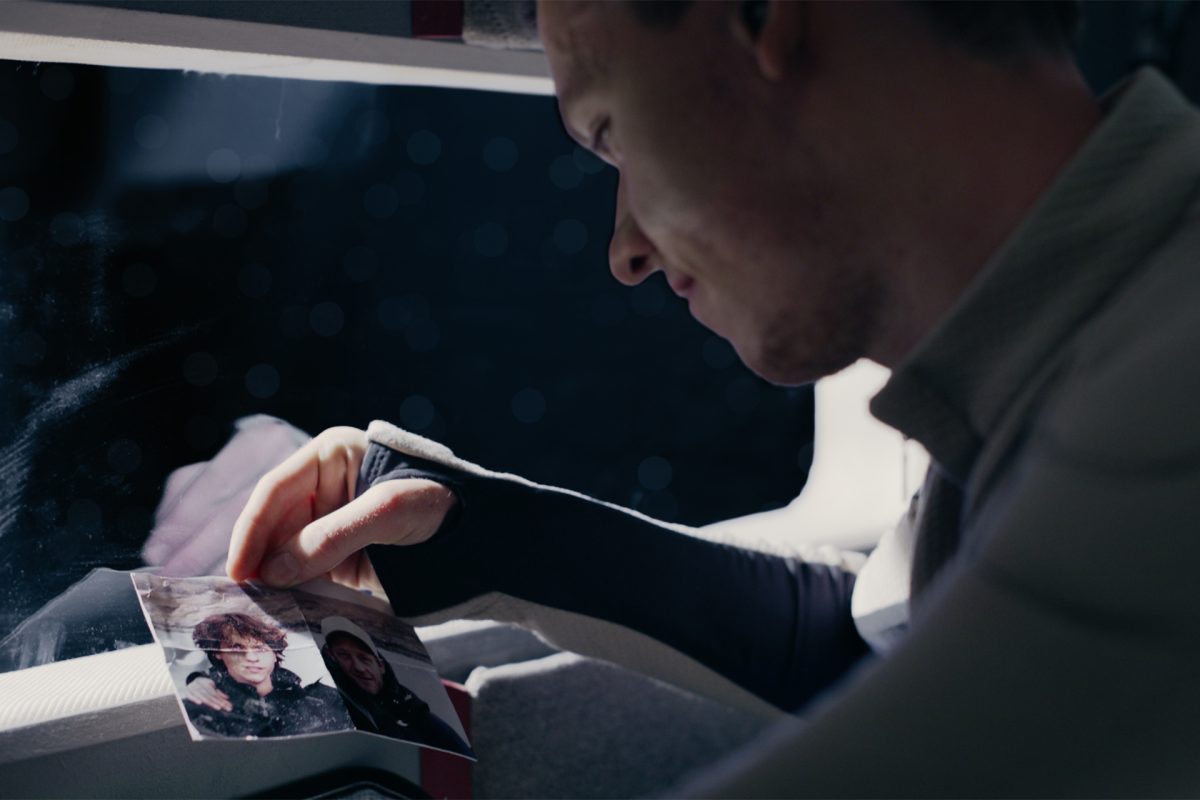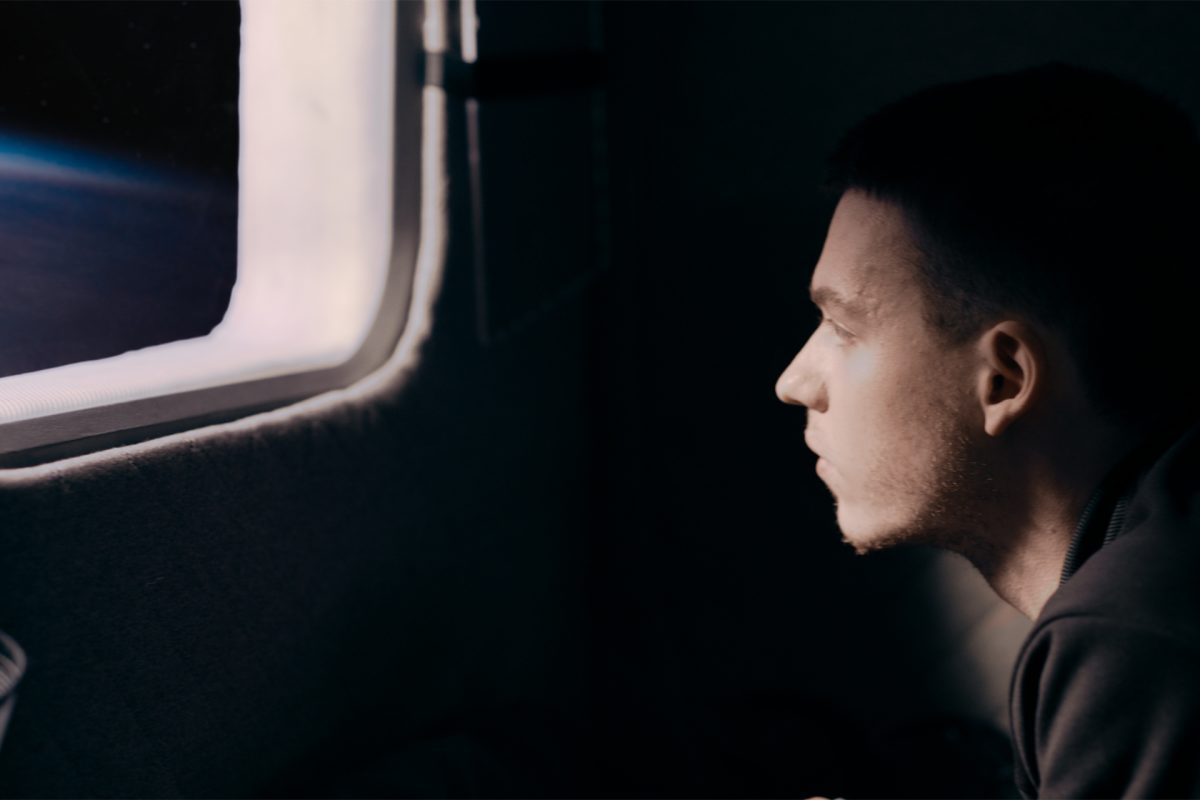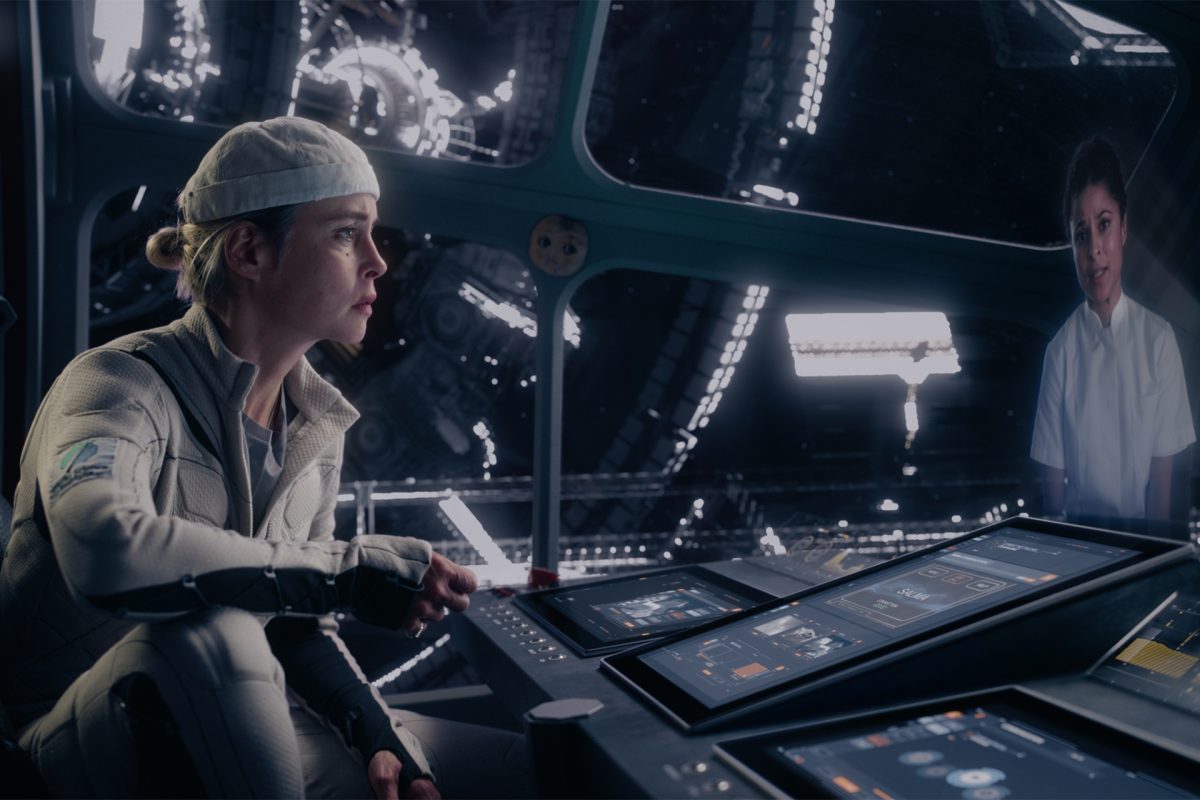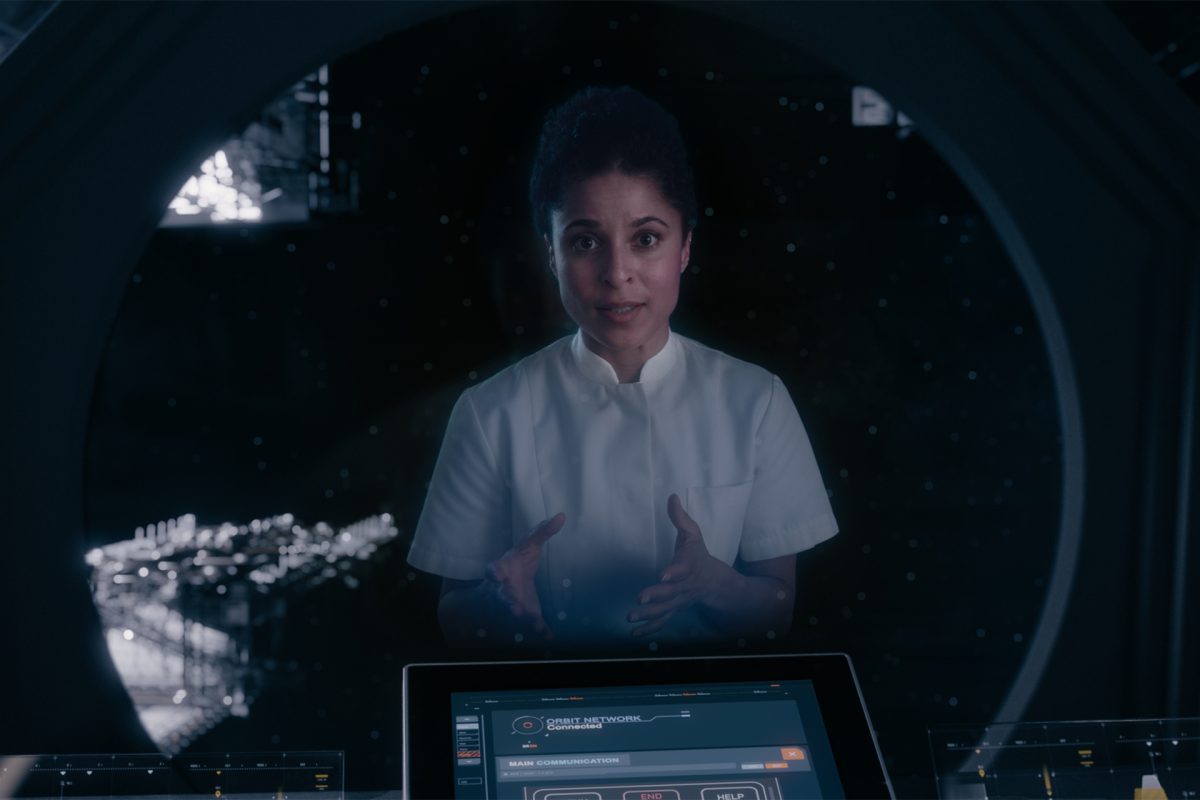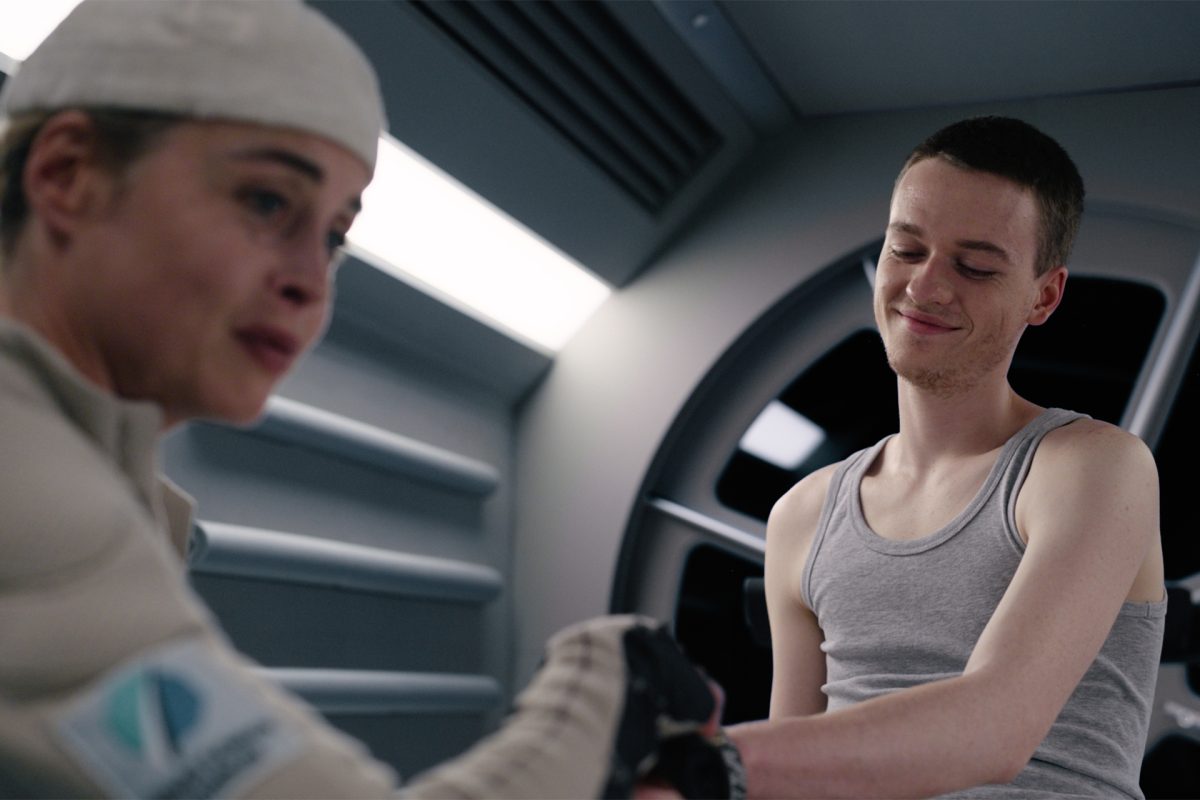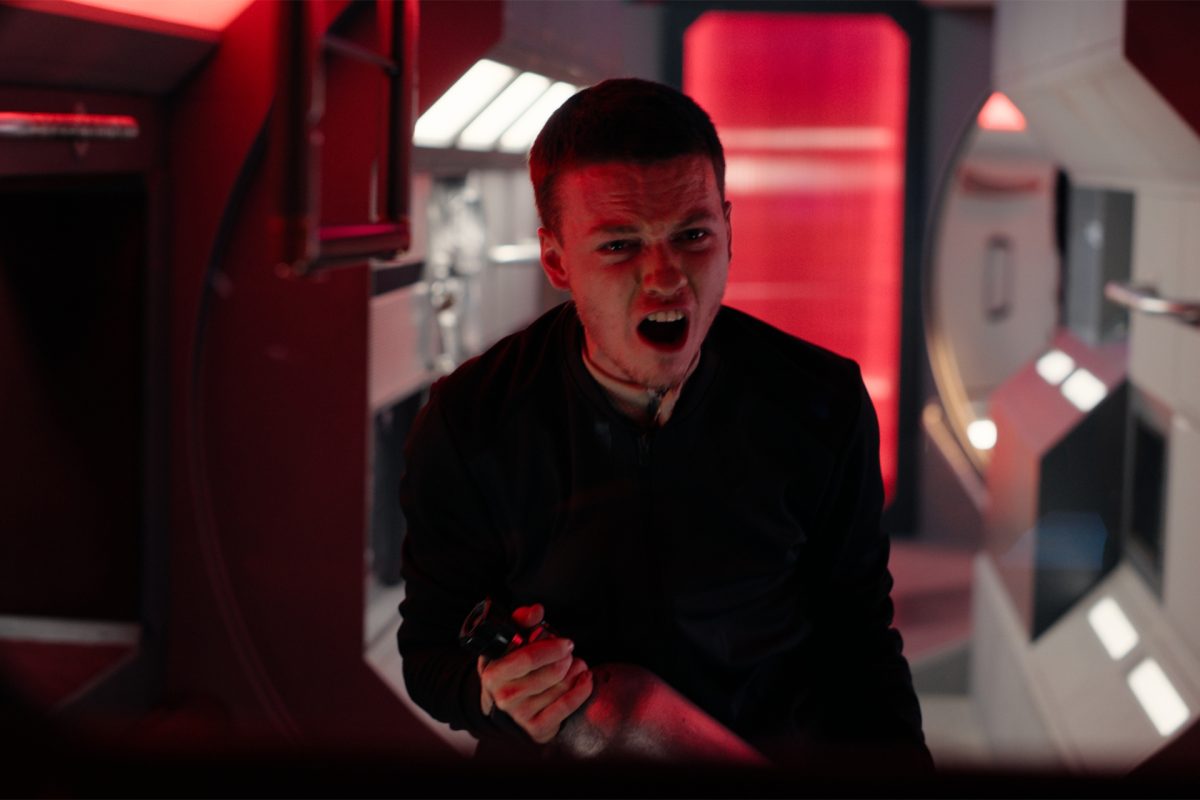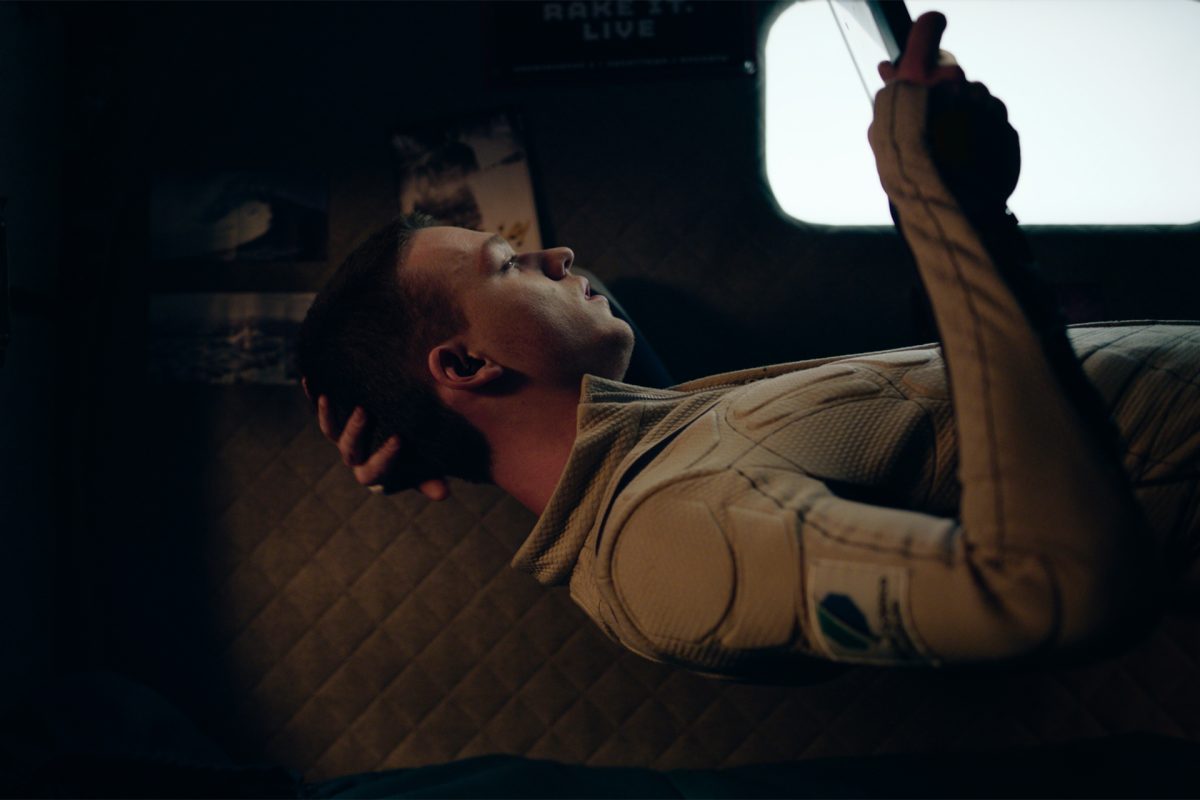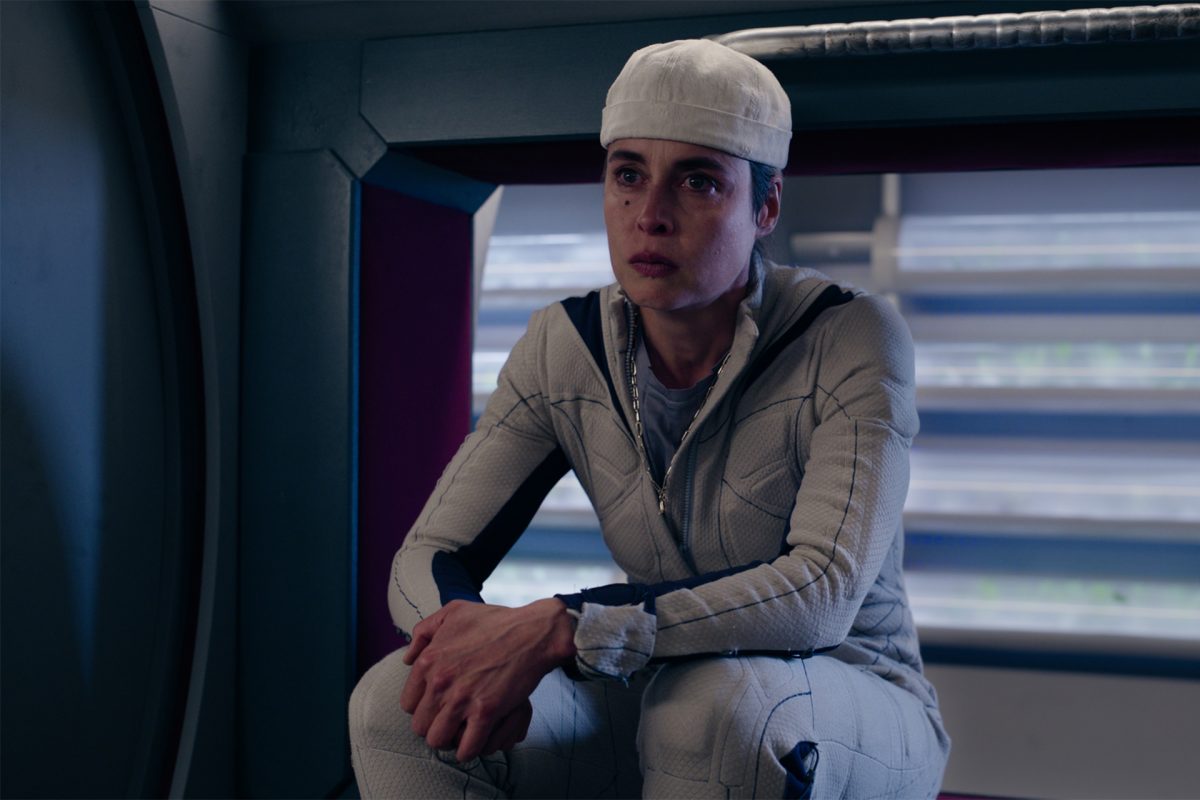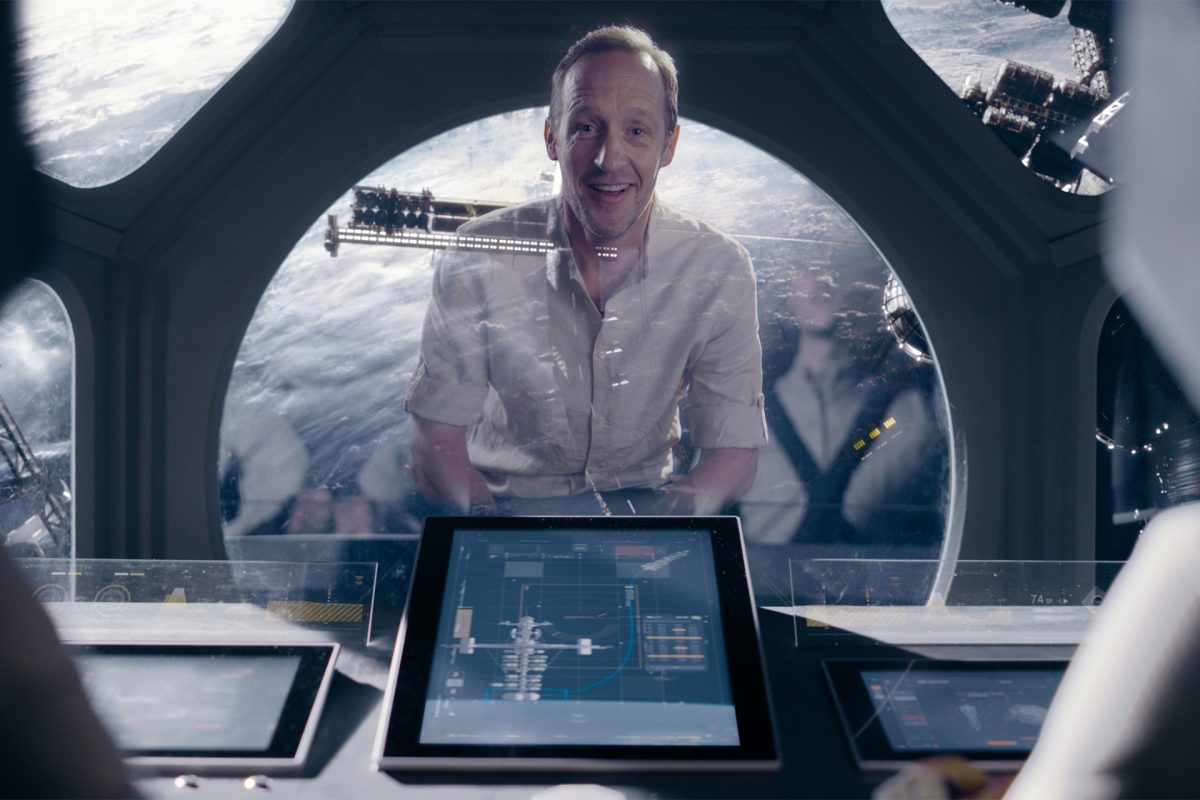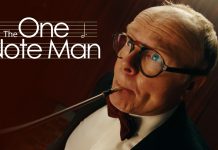Without question, one of the most ambitious and spectacular shorts of recent years is film-making team Nils Keller and Jonas Lembeck’s ALMOST HOME, which focuses on the dilemma facing a mother and son as they return to Earth.
Film And TV Now spoke with the duo about their work on this exceptional short.
The style of the film is rooted very much in the likes of ALIEN, INTERSTELLAR and SILENT RUNNING. What was the start-off point for the short?
NK: The idea for ALMOST HOME was inspired by a newspaper article I read in March 2020 about a cruise ship’s odyssey due to rising Covid 19 fears.
What really shook me was the mention of people who, after being trapped aboard their floating steel prison for weeks and despite the prospect of finally being able to leave, questioned whether it was safer to stay. Absurd at first glance, I immediately wondered what this might say about our lifelong struggle to draw a line between safety and freedom.
The idea of using certain aspects of this article and transforming it into a more universal short film story that departs from the reality of Covid and takes the form of a character-driven coming-of-age drama set in space, evolved over the next few days.
As for the movie references mentioned, they were a great inspiration, as I’d describe them as partially or fully grounded sci-fi stories with strong characters and relatable problems – if you forget about aliens and accessible parallel dimensions. Also, they share this idea of a contained environment you can’t easily escape.
The story is very much rooted in the current status quo about the paranoia of global events. Where do you feel sci-fi can give you a refreshing perspective on familiar ideas?
NK: The main reason for setting this story in a futuristic and isolated environment was to distance it as much as possible from Covid 19.
The spaceship is meant to provide a confined cinematic stage to reflect on what it means to be dependent – on our parents or other people who try to have a saying in our life choices – and how hard it can be to break away from that while not destroying the relationship.
It’s that very physical yet metaphorical expression of not being able to run or hide. I wanted to focus on our characters and their dramatic conflict and see the larger implications of life in that. The genre sets felt like a good canvas for that. I believe it’s one of the most magical powers of cinema, that narrative distance can pave the way to talk about essential issues in our lives that would otherwise be buried under too many strange or personal circumstances, or too hurtful to address.
Tell us about your cast.
NK: I’m very grateful to our actors for their trust and commitment to this no-budget project, that involved so many young filmmakers. Through their artistic love and work in preparing and playing their characters, they managed to fill this distant and abstract environment with life.
Susanne Wolff is a well-established actress in Germany, known for her work in theatre, film and television. For example, she did films with German Oscar winner Volker Schlöndorff.
The most interesting reference however was her role in STYX, for which she received the GERMAN FILM AWARD. In it, she plays a woman who sails alone across the Atlantic until her tiny ship collides with a refugee boat and an escalating, morally ambiguous conflict ensues.
For our role of Nico, I was looking for a complex and tough character who was able to play with rigour, but who also has these emotional breaking points. Nico is not only a mother who cares for her son but also a scientist and a very hands-on person who can physically and mentally operate a spaceship under life-threatening conditions.
Very different from a teenager with lofty dreams, and emotional and social aspirations. For me, this different outlook on life was the basis for the conflict between the two.
For the role of Jakob, my aim was to find a young actor who could display extreme resilience but also vulnerability, enthusiasm and despair, thoughtfulness and emotionality.
Jeremias Meyer is one of those great newcomers who are open to radically trying things and reflecting on experiences. In our case, he was oftentimes asking for impulses to get things right and develop a deeper understanding of his character inside this unique situation of being trapped in space.
One day he locked himself in a room to learn how to mimic zero gravity, then sent me fun videos to give him feedback on. You could really see the progress between Take 1 and 36. We were lucky enough to meet Jeremias just before his recent big career moves as an aspiring actor, working as a lead in big-budget projects for Prime Video.
Stephan Kampwirth, who plays Jakob’s father and is only present through a hologram, is a well-known actor in Germany who stars in the Netflix series DARK.
I was looking for a character who, unlike Nico, is more of an emotional and warm person. His presence, his view of the situation and his influence on Jakob had to be strongly felt, even though he is not physically present. He mirrors Jakob’s enthusiasm and his love of life, standing up for the fact that you can’t make all decisions based solely on safety concerns and abstract numbers.
He also stands up for Jakob’s right to empowerment and self-determination even though he himself doesn’t fully live up to it by sparing his son the full truth about the situation.
Tell us about your production team.
NK: The production team around producer Jonas Lembeck and his company Le Hof Media was one of the main reasons that made this film possible.
It is important to note, that ALMOST HOME is a student production. If I think back to 2020 when there was only a script, Covid raging, we had no money and needed to build a full-size walk-on spaceship, it is remarkable that Jonas and his team believed in this whole undertaking.
Most would have thought we won’t even make it to the shooting stage. And it was not only their belief in the possibility of creating this coming-of-age sci-fi short film on a tiny budget but their trust in the whole vision.
JL: Everyone in the production team worked hard and hands-on to make things happen. Over time, we were so fortunate to get ARRI, ARRI Rental, Pharos the Post Group and many other great partners on board.
Together we amassed an astounding number of sponsors for various pieces of this production and got our high-profile actors as well as an amazing team of passionate filmmakers on board. I am very thankful to have this great team behind me and the project.
Where did you shoot and for how long?
JL: We had to find a lot of creative ways to make this project happen. For example, we didn’t use a real studio but set up our spaceship in an empty hall of Munich’s wastewater management.
This gave us a lot of room and time to work. On the other hand, we had to cover the walls with Moletton against the echoes and the skylights with pond foil. Fortunately, the smell wasn’t too much of an issue.
All in all, we had 11 shooting days inside the spaceship set and one additional outdoor shooting day for Jakob’s flashbacks on Earth.
Tell us about the visual effects and your team.
NK: There wasn’t really a team there, just one person: Lukas Väth. He studied directing in the same class as I did.
During our time at film school, Lukas began self-taught specializing in visual effects besides still doing great films as a director. When at the very beginning of the project, I asked him if he wanted to be the visual effects supervisor, I never expected him to be willing or able to do the complete supervision and almost all of the VFX post-production single-handedly.
He really did everything from modelling the spaceship and space station from scratch, designing the holograms and displays, replacing the multifold blue screens and much more. And all of that – we’re talking about roughly 300 full or partial CGI shots in the film that were done and jointly discussed over the course of a full year in post-pro – happened from inside his home with two computers.
The only element we outsourced was the very time-consuming wire removals for certain shots in zero gravity. It’s hard to put into words how much I thank Lukas for all the time he invested into this project which wasn’t always easy to work on.
Tell us more about the working relationship you had with your cinematographer.
NK: I think it was very important for this project that Georg Nikolaus, the cinematographer, and I know each other since the beginning of film school.
We did almost all our short films together and worked on some commissioned productions for commercials and television together. There has always been a shared understanding that story and characters must come first when we think about visual language.
In the case of ALMOST HOME, we discussed the possible layout of the spaceship early on to make sure we had the right mix of a narrative stage for our story and enough opportunity to visually approach the characters and their environment in an intimate way. Further down the road, we used the 3D model of the spaceship, created by our incredible production designer Pan Patellis, to work out literally every shot, the blocking and camera movements.
The spaceship was so cramped, the shooting time so short and the technical demands so advanced, that we had to exactly know where to put the camera and determine what walls and ceilings had to be disassembled for certain scenes. Yet we also often took a step back from planning and considered how to visually help express Jakob’s emotionality and his longing for Earth as it felt important to convey a human and poetic note in a cold environment like ours.
Through highlighting Jakob’s personal items with their used surfaces, the presence of the earth through moving sunlight glimpses through the windows with the blue marble in sight etc. As a result, there was a lot of planning together with the art department as well. We also stayed true to the idea of letting the camera playfully float at the beginning of the film where Jakob feels free and optimistic in zero gravity.
When gravity sets in, the visual language becomes as stiff as his body. To emphasize the relationship between Jakob and his mother and their shifting understanding of each other, we discussed every angle, inch and trick possible inside a confined set like ours. It was of incredible help here that ARRI Rental supported our work with their amazing equipment like the ALEXA Mini LF, lights and much more.
Later in post-production, Georg continued to be an integral part of our naturally understaffed project, having ongoing conversations about the right perspectives for visual effects, dispelling, preparing the Color grading, creating screen inserts, artworks etc.
Would you like to expand on the ideas explored here into a feature idea?
NK: Yes, definitely. Together with Jonas Lembeck, the producer, I’m already quite far along in the development of ALMOST HOME – The Feature.
The idea is to use the same core themes as in the short: a teenager who dreams of Earth and wants to free himself from his mother’s rule but is locked inside a spaceship with her. Again, it’s a confined stage for a cinematic character-driven coming-of-drama with an inescapable conflict.
Yet we also feel the urge to expand it, make it more “Hollywood”. However, the most important novelty will be that we expand the humanistic question being posed in the film. Beyond the struggle of parents and their children for freedom, it will now also be: Whom do you want to be as an adult? What do you stand for? And will you use your newfound power to stand up to the injustices in the world that you may even benefit from?
Not to give away too much but there will be several more characters on board and elements of TITANIC in ALMOST HOME – The Feature.
Who and what are your key cinematic influences?
NK: My filmmaking was influenced early on by directors who aim to create an immersive, cinematic world for their audience while conveying an emphasis on storytelling and relatable drama.
Like Denis Villeneuve. Although he often strays from reality and ventures into different genres, his films touch me on a deep emotional level as his characters struggle with issues of growing up, losing a family member, and protecting loved ones.
Take ARRIVAL as an example. At its emotional core, this film is about losing and letting go of loved ones. About coping with very hurtful things in life that we all know. Looking at it through the lens of a sci-fi film that unhinges our reality in spectacular ways, this becomes cinematically accessible. I think besides Denis’ amazing sense of humanistic storytelling and creativity, there’s also an abundance of craftsmanship and preparation behind all of that.
Another big influence is German filmmaker Roland Emmerich, who studied at the same film school as me and whose successful international career inspired me early on to broaden my view of the global film industry.
More heroes to mention are Kathryn Bigelow, German filmmaker Edward Berger whose films I always adored but whose masterpiece so far might be “All Quiet on the Western Front”, David Fincher and Ridley Scott.
You have worked across commercials, film and TV. How does each separate medium influence you as a filmmaker and artist\?
NK: It’s always important for me to create an intriguing world and tell a story within the given production scope.
I love exploring what is possible with an idea while making sure it remains relevant to a broad audience. The main difference in each separate medium is the leeway I’m granted to execute these larger concepts.
With commercials, there are often the least, but there’s also often the opportunity to try radical things, especially on a visual level. And that can be a lot of fun. Regarding the German TV productions I’ve done, I’ve been surprised by seeing how much love and creative freedom I was allowed to infuse into the work, even though the production framework tended to be restricted quite heavily in some respects.
This, however, pushes me to express my storytelling ideas very efficiently which is a very valuable creative challenge. Still, films (and big TV/streaming productions) are my favourite goal here. My aim as a filmmaker is to find places where I receive the full attention of the audience.
Whether it’s that paid for a ticket to sit in a movie theatre or at a festival, or the act of turning off the lights at home and finding the best place to sit. I feel that granted attention is a great and rare gift in a time when we’re all distracted by so many things.
And within this granted attention lies the greatest potential to use so my voice and perspective as a filmmaker to create a world and communicate with the audience in an entertaining yet meaningful way.
What issues and themes are you keen to explore in future work?
NK: The stories we are currently developing all revolve around rather universal themes of humanity that come to life in a grounded genre setting through character-driven drama.
More narrowly, I would say that the characters’ journeys revolve primarily around the question of how to develop your own voice and what to use it for. Besides a feature adaptation of ALMOST HOME or for example, there is a dark horror story that deals with the lies and fairytales we tell each other in order to avoid recognizing the implications of reality.
JL: It´s great to see that Nils and I share the same vision of movies and projects we would like to shoot next. The current developments we work on together represent this vision of a human drama combined with impressive worldbuilding.
How has the festival circuit helped your film?
NK: The film is still quite young and qualified for the Oscars in the Best Live Action Short Film category by winning the Student Academy Award.
Looking into the future, we are of course, about all upcoming festival participations, because they mean that the film we put so much love and work into will be seen by audiences. I think that must always be the goal.
Finally, what are you most proud of about this short?
JL: First, I am proud that we were able to realize this movie with the limited resources we had. So, it’s an honour for us to be shortlisted among these other great filmmakers with this short we all believed in. Finally, it is great to receive feedback that the coming-of-age drama and the theme touched them so deeply.
NK: I am certainly most proud of the fact that, apart from all the technical aspects of this production, viewers from all over the world and from very different backgrounds express how much the film touched them emotionally.
How it felt relevant to them in a way related to their own life story or their personal experiences and feelings during Covid. For me, this multiplicity of possible perceptions is very important because, above all, this film shall stand for the unpredictability of everyone’s life journey, which rarely goes as planned.


